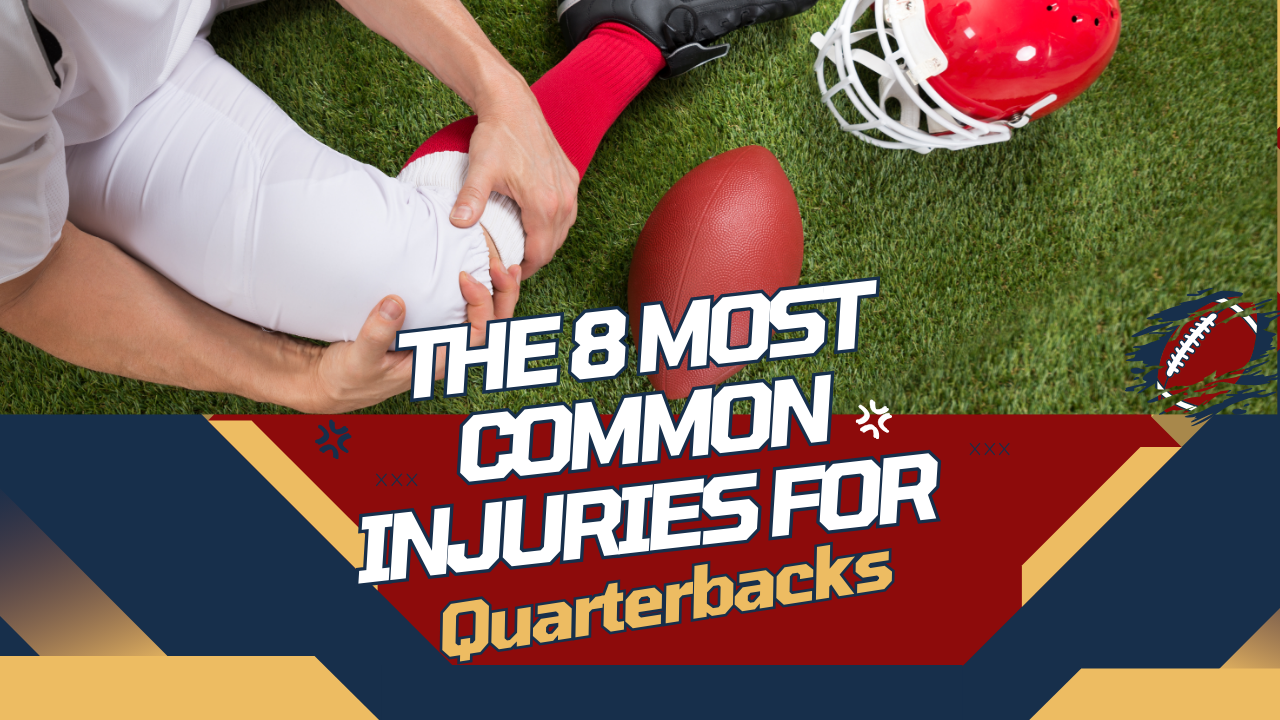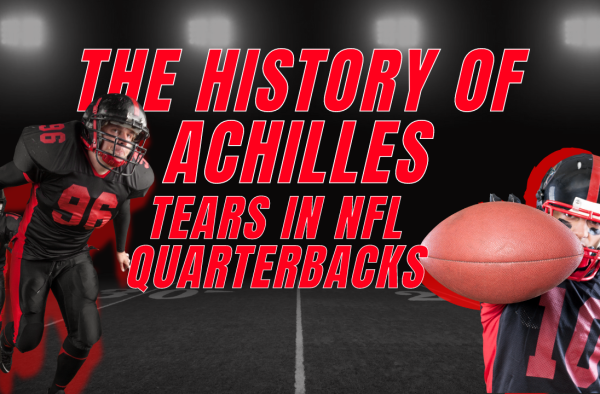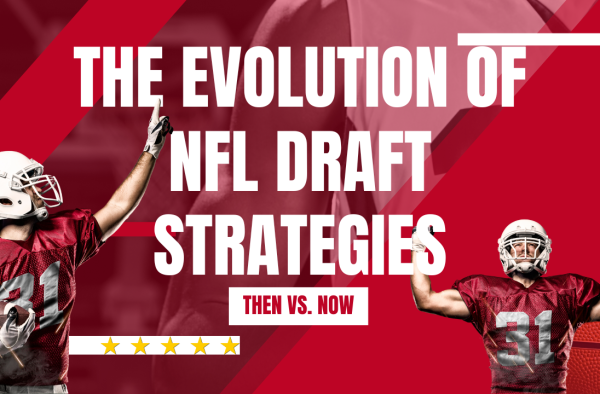Quarterbacks play a critical role in football, often facing intense physical challenges that can lead to a variety of injuries. Here are the eight most common injuries that quarterbacks encounter, along with preventive measures and treatments.
1. Concussions
Concussions are traumatic brain injuries caused by a blow to the head or body, leading to the brain moving rapidly inside the skull.
Symptoms:
- Headaches
- Dizziness
- Nausea
- Confusion
- Memory loss
Prevention and Treatment:
- Use of proper helmet fitting and techniques
- Immediate medical evaluation
- Rest and gradual return to play under medical supervision
Example:
An example is the concussion sustained by Tua Tagovailoa, the Miami Dolphins quarterback, which led to significant time away from the game to ensure full recovery.

Shoulder Injuries

Shoulder injuries, including rotator cuff tears and labrum tears, are common due to repetitive throwing motions and physical contact.
Symptoms:
- Pain and swelling
- Limited range of motion
- Weakness in the shoulder
Prevention and Treatment:
- Strengthening exercises for shoulder muscles
- Proper throwing mechanics
- Physical therapy and, in severe cases, surgery
Example:
Green Bay Packers quarterback Aaron Rodgers has faced multiple shoulder injuries throughout his career, emphasizing the importance of proper rehabilitation.
Knee Injuries
Knee injuries, such as ACL tears, MCL sprains, and meniscus tears, occur due to sudden changes in direction, tackles, and collisions.
Symptoms:
- Swelling and pain
- Instability
- Difficulty bearing weight
Prevention and Treatment:
- Use of knee braces during practice and games
- Strengthening exercises for knee stability
- Surgical repair and extensive rehabilitation
Example:
Tom Brady’s ACL tear in 2008 highlighted the potential severity of knee injuries for quarterbacks and the importance of effective recovery programs.

4. Ankle Sprains

Ankle sprains result from the ligaments around the ankle being stretched or torn, often due to awkward landings or being tackled.
Symptoms:
- Swelling and bruising
- Pain and tenderness
- Reduced mobility
Prevention and Treatment:es
- Ankle strengthening and flexibility exercises
- Proper footwear and taping
- Rest, ice, compression, and elevation (RICE), along with physical therapy
Example:
Patrick Mahomes has dealt with ankle sprains that have impacted his play, underscoring the need for comprehensive ankle care.
5. Rib Injuries
Rib injuries, including fractures and cartilage damage, occur from direct hits to the torso, common in high-impact collisions.
Symptoms:
- Sharp pain in the rib area
- Difficulty breathing deeply
- Swelling and bruising
Prevention and Treatment:
- Protective rib padding
- Avoiding direct hits through quick release of the ball
- Rest and pain management
Example:
Drew Brees suffered multiple rib fractures during his career, highlighting the need for effective protection and recovery strategies.

6. Elbow Injuries

Elbow injuries, such as tendonitis and ligament tears, can result from repetitive throwing motions and overuse.
Symptoms:
- Pain and tenderness around the elbow
- Swelling and reduced range of motion
- Weakness in the arm
Prevention and Treatment:
- Proper warm-up and stretching routines
- Strengthening exercises for the arm muscles
- Rest, physical therapy, and in severe cases, surgery
Example:
Ben Roethlisberger’s elbow injury required surgery and extensive rehabilitation, demonstrating the serious nature of such injuries.
7. Hand and Finger Injuries
Hand and finger injuries, including fractures and dislocations, are common due to the need to handle the ball and contact with helmets and ground.
Symptoms:
- Pain and swelling
- Bruising and deformity
- Difficulty gripping or moving fingers
Prevention and Treatment:
- Protective gloves
- Proper hand positioning and catching techniques
- Splinting, rest, and physical therapy
Example:
Russell Wilson has experienced finger dislocations, emphasizing the need for effective treatment and protective measures.

8. Hamstring Strains

Hamstring strains occur when the muscles or tendons in the back of the thigh are overstretched or torn, often during sprinting or sudden movements.
Symptoms:
- Sharp pain in the back of the thigh
- Swelling and bruising
- Difficulty walking or running
Prevention and Treatment:
- Proper warm-up and stretching exercises
- Strengthening exercises for the hamstring muscles
- Rest, ice, compression, and elevation (RICE), along with physical therapy
Example:
Kyler Murray has dealt with hamstring strains, showing the importance of conditioning and careful management of such injuries.
Quarterbacks face numerous physical challenges that make them prone to various injuries. By understanding these common injuries, their symptoms, and the best preventive and treatment strategies, players can better protect themselves and maintain their performance on the field. Proper training, conditioning, and medical care are essential for quarterbacks to minimize the risk of injury and ensure a long, successful career in football.







